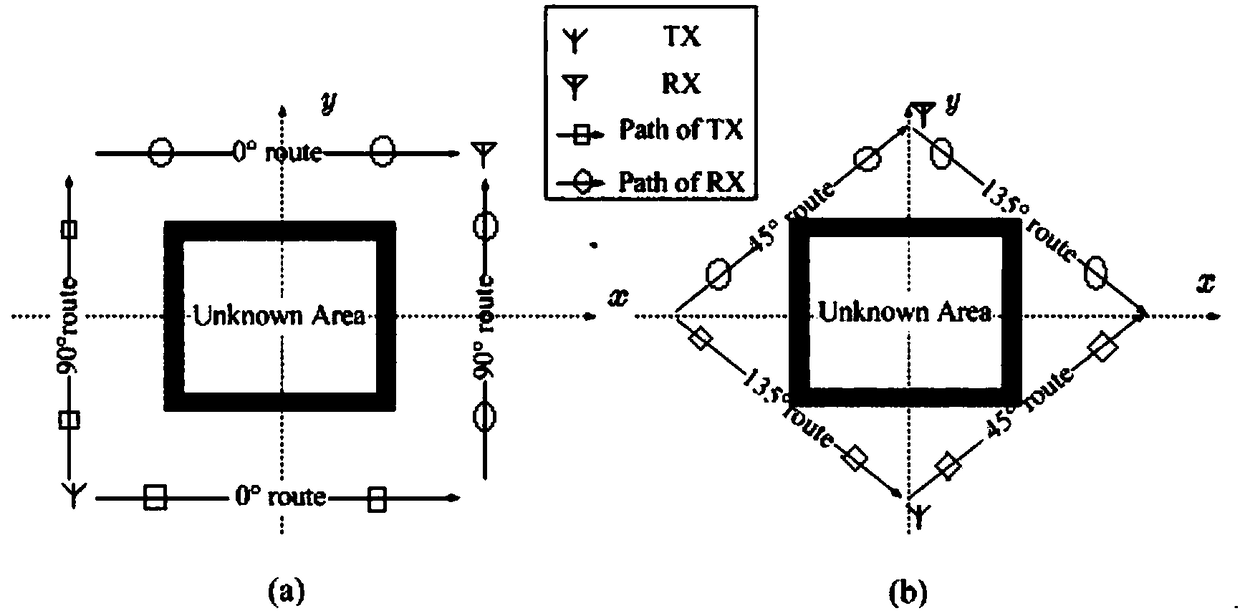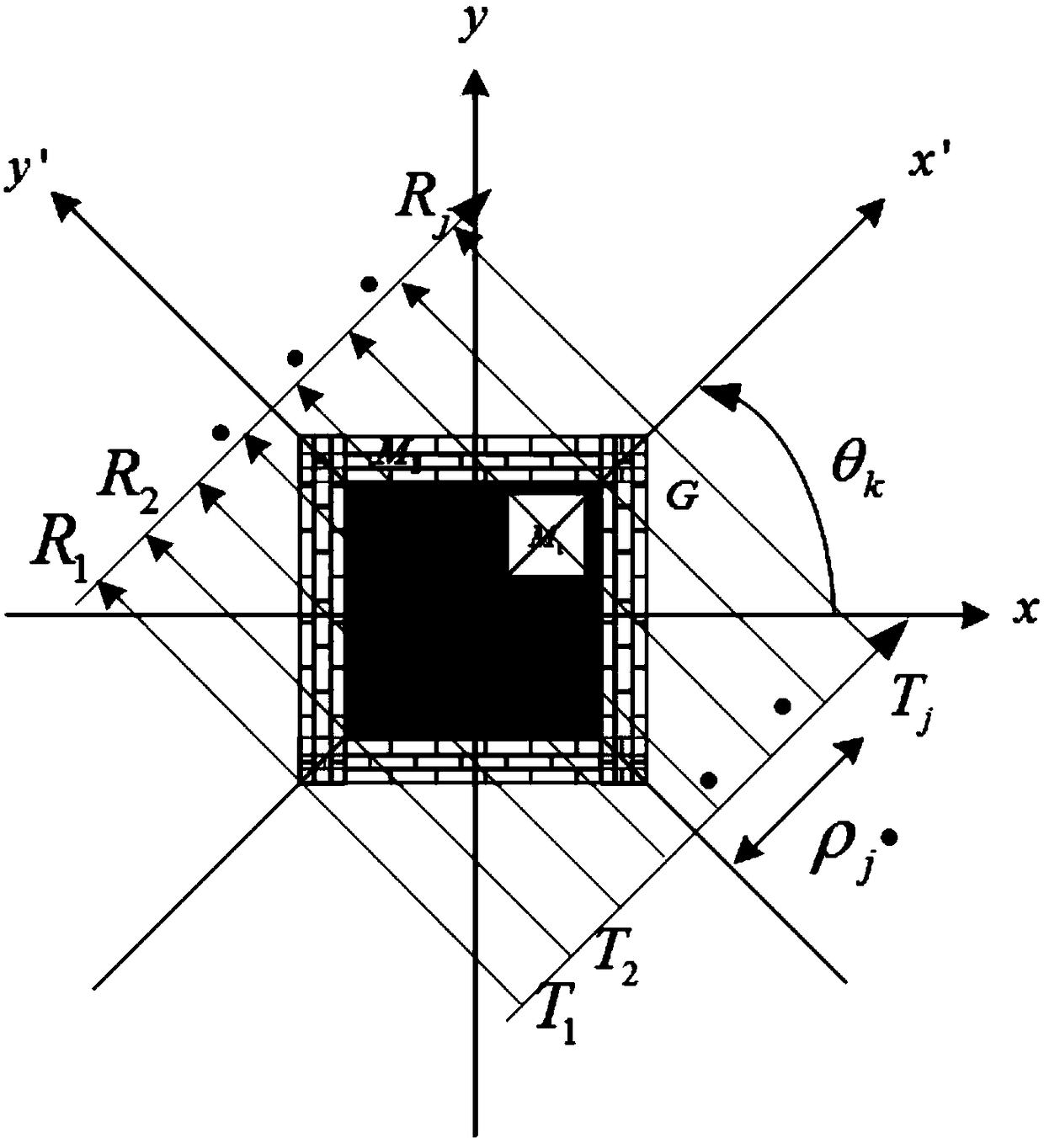Adaptive through-wall imaging method based on narrow-band system
An imaging method and self-adaptive technology, applied in the field of through-wall imaging, which can solve the problems of masking, little research, and the reduction of image reconstruction recovery degree, and achieve the effect of small calculation amount, strong environmental applicability, and high image resolution.
- Summary
- Abstract
- Description
- Claims
- Application Information
AI Technical Summary
Problems solved by technology
Method used
Image
Examples
Embodiment Construction
[0046] Step 1: Scene scanning steps:
[0047] Let the scanned area be G∈R 2 , assuming the emitter moves along θ k Directional scanning, when the jth group of signals is transmitted, the straight line equation of the sending and receiving sensor connection can be expressed as xcosθ in normal form k +ysinθ k = ρ j ; The electromagnetic wave is received by the receiver after passing through the scanning area G from the transmitting end, and the energy of the electromagnetic wave is attenuated, such as figure 1 shown. The attenuation of electromagnetic wave energy mainly comes from three parts: the attenuation of electromagnetic wave energy with distance, the attenuation of electromagnetic wave energy by objects in the scene, and the influence of multipath, diffraction, and noise on electromagnetic wave energy. RSSI measurement value P received by the receiving antenna R (ρ j ,θ k ) can be modeled as:
[0048] P R (ρ j ,θ k ) = P L (ρ j ,θ k )-g(ρ j ,θ k )-ζ(ρ j...
PUM
 Login to View More
Login to View More Abstract
Description
Claims
Application Information
 Login to View More
Login to View More - R&D
- Intellectual Property
- Life Sciences
- Materials
- Tech Scout
- Unparalleled Data Quality
- Higher Quality Content
- 60% Fewer Hallucinations
Browse by: Latest US Patents, China's latest patents, Technical Efficacy Thesaurus, Application Domain, Technology Topic, Popular Technical Reports.
© 2025 PatSnap. All rights reserved.Legal|Privacy policy|Modern Slavery Act Transparency Statement|Sitemap|About US| Contact US: help@patsnap.com



